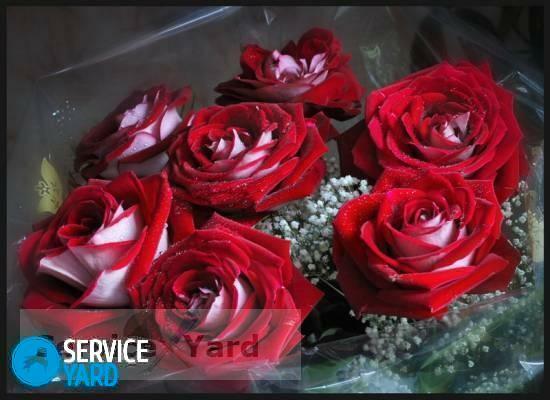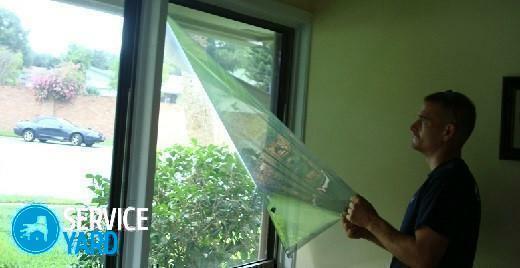To maintain a comfortable temperature in the room, which for centuries enjoyed the stove heating. But even in this traditional method, new advanced technology heat appear. Most often, the furnace is used in those places where excluded the possibility of connection to the gas pipeline. Although, even in the presence of gas, this type of heating can be used as a backup or additional embodiment.

How to make a heating furnace so that it works with a maximum heat output?
Plain brick furnace implies a firebox, ash, chimney system. It is thanks to the last element heats the room, because the gases pass through the complicated channels and give the brick its heat.
However, if the area your home is too big, this heating system will not be very effective. Therefore, today often installed inside of the furnace heat exchangers that heat the water, air or steam is generated. This system significantly increases the efficiency of the heating structure, which contributes to increase the area of heat in the building for the same amount of fuel used.
Types of heating using a furnace brick
After realizing oven heating efficiency, can work on the right choice of the building heating method. For this purpose, using standard circuit teplopodachi from heating with the difference that the boiler will replace the traditional design of brick.

Important! Before choosing the type of heating is necessary to define the area you are going to be heated. This - the main selection criterion.
The fact is that with the help of this criterion you can easily calculate the maximum cooling rate of the coolant as it passes along the transport route. Considering this factor, we can confidently talk about choosing the type of space heating using an oven. Therefore, most often are:
- water;
- air;
- steam heating.
And now in more detail.
The water heating method


The main element in this heating - the heat exchanger.
Its function: heat transfer water contained in the system, which is formed by the combustion of fuel: wood, coal, briquettes, etc. Usually, it is made with their own hands, as there is no uniform standard flue cameras. For this purpose, use heat resistant steel (thickness ≥ 2 mm).
During construction, such water furnace are different. Important: ensuring the maximum contact area of the combustion of the fuel material with the heat exchanger. One of the most effective, is n-shaped heat exchanger.
Given the specific heat and other physical characteristics of the most popular one is of steel construction. For welding, you must perform the drawing of the heat exchanger, given the following conditions:
- dimensions of the chamber for the fuel must be identical to the internal dimensions of the device;
- if the line is open, the use of the pipe diameter of 40 mm for its installation, and closed if - then 32 mm;
- a heat exchanger to be mounted in the furnace construction. If you want to use the old furnace design, you still have to disassemble it, to be able to access to the combustion chamber.
Tip! To ensure uniform heat distribution on all radiators, as well as to avoid possible overheating of the coolant, it is best to install the circulating pump.
To battery layout has not given much trouble, best furnace with the presence of the water circuit to place the wall. Furthermore, such a binding element of the heating system is an expansion tank.

If the heating circuit, the tank, the other elements are welded to the high technical level, the circuit is always filled with water, and circulation pump runs smoothly, the water heating system is not only very effective but also completely safe.
air
If the stove to make chimney channels with the maximum allowable area, then this option air heating provide a quality heating room. Immediately it should be noted that in this way it is possible to heat only a small room.
As an alternative - to install a heat exchanger in the likeness of the fireplace heating. This requires a sealed structure in which the heating of the air will occur through natural convection, and the air will be supplied by special conveying channels.

Although, in practice, the creation of this type of heating - it is not very simple. This is due to the fact that a considerable part of the upper is intended for the chimney. And prevent air contact with the carbon monoxide did not. In addition to this, the efficiency of air heating is possible in the presence of a large volume of the chamber. In addition, to design disadvantages are:
- ban on the use of the old furnace;
- dimensions underwater channels which should have a diameter of not less than 100 mm, which causes some difficulty mounting them in an oven;
- the need to install the fan on the canals: that such heating has been highly effective.
Therefore, this type of heating is practiced very rarely.

Possible schemes air channels
steam
To create steam heating of the stove must be reserved with special equipment, as the water to be heated above 100⁰S.

Generally for such purposes are factory steam boiler, the temperature of which controls a group of devices.
Hot steam forming in the heat exchanger is supplied to the air pump conduit. Water is supplied automatically, depending on its pressure drop.
The main problem in the incarnation of this project in life is to have a very powerful chamber of the furnace. In addition, when you create a design for the steam heating is necessary to ensure the placement of all equipment next to a heat exchanger, which is not so easy. Plus, it prevents the use of the mechanism by which it was possible to adjust the flow of coolant in the system.
Considering all "for" and "against" one can conclude that the optimal variant with heating by a furnace - water heating, which is the easiest to mount, maintain, and the most effective in terms of heat.
Pros and cons of stove heating
Stove heating differ:
- reliability;
- affordability;
- economy, resulting in the possibility of relatively cheap to acquire solid fuels;
- ease of operation and maintenance. That is, even if there are small problems that you can solve their own, without involving professionals in this.
In addition, you can install the stove heating in the house, placed in any location, such as the heating appliance does not require special communications.
Although characterized by some negative points for heating:
- a heating furnace for a long time, the coolant, and, simultaneously, space;
- low efficiency brick structure;
- building occupies a large area;
- in the functioning of the construction is necessary at all times to look after her, because you need to add fuel to the furnace.
Tip! In order to increase efficiency it is recommended that the channels have a large length, which will linger longer heat inside the furnace and the chimney itself must be high.
Cast iron oven water circuit with the presence of
There are also cast-iron kiln, provided with a water circuit. Typically, these constructions - prefabricated and made of different capacity. They are designed for heating buildings with different areas. There are units capable of warm 2-and even a 3-storey high building.

composite structures manufactured from cast iron today. This means that they are provided with electrical heating, which is automatically activated at the right moment, when the temperature decreases coal, wood or other fuel. Thanks to this combined function, the oven has always supported the heating system in the required temperature range.
The design of the cast iron may be 2-contour. This means that in addition to heat, water heating device is foreseen, which is very convenient.
Keeping fire regulations
Combustible construction must be protected from the furnaces and chimneys. It helps in the presence of fire and otstupkov razdelok.
Otstupka provides a fire structure which is capable of protecting combustible surfaces from hot ovens, chimneys.
That is, it is not nothing but a set of necessary measures, as well as a set of distances, maintaining that protects the combustible elements of the room.
By bunching understand fire design, thanks to which generated non-flammable space appears when crossing the combustible elements of the room. For example, when the chimney passes through the roof or wall, then it must thus be insulated to protect the combustible portion of the structure from a possible fire.

There are a number of recommendations, the implementation of which will reliably protect the house from fire:
- use non-combustible materials;
- adhere to the standards required distance from the stove to flammable constructions houses;
- reliably insulate the kiln surface closely spaced from the walls, intermediate floors, etc .;
- apply the screening. This means that it is necessary to use fireproof partitions and screens to shield part of the house from the intense IR radiation;
Important! Screen help in the event that will be used in parallel other methods of protection in the form of ventilated gaps, distances, heat dissipation.
- use a heat dissipation method. The essence of the method: to establish inside vertical cutting steel plate, which will "take" a part of the heat and thus reduce its internal temperature. There are cases that after the ignition of the furnace occurs, e.g., a wooden structure, because all of the heat accumulated inside the alteration, and the steel plate was not;
- provide construction ventilated gap that will contribute to the reduction of temperature indicators.
Today stoveheating still relevant. If you can build the stove - then the house will be warm, whatever the weather outside. You only have to stock up on fuel. That's all. Even those hosts that are used for heating the gas, do not leave a brick or cast iron construction. After the oven, especially in the wood radiates not only the heat, but also creates a special atmosphere and comfort in the whole house, so that we sometimes do not have enough.



